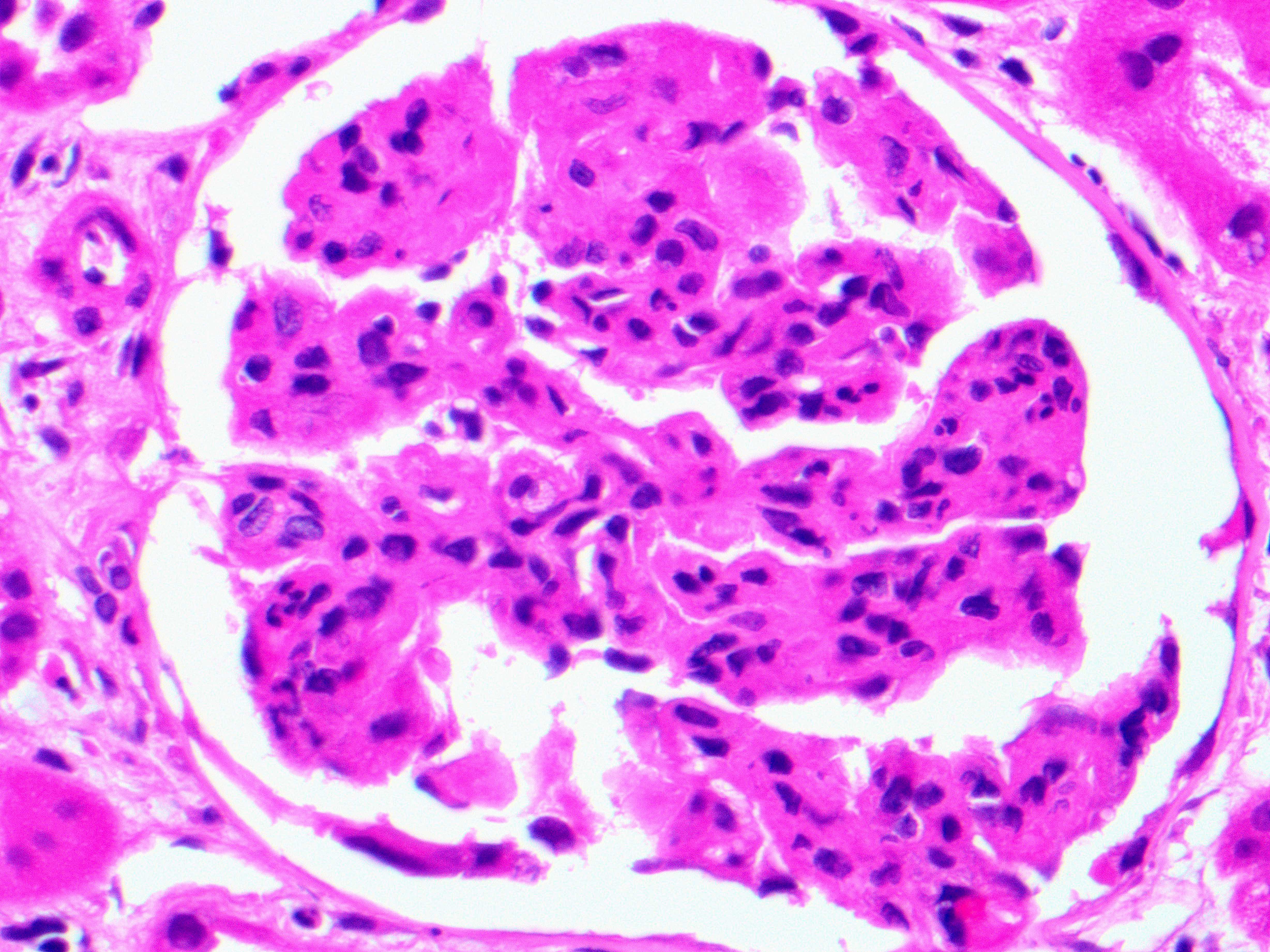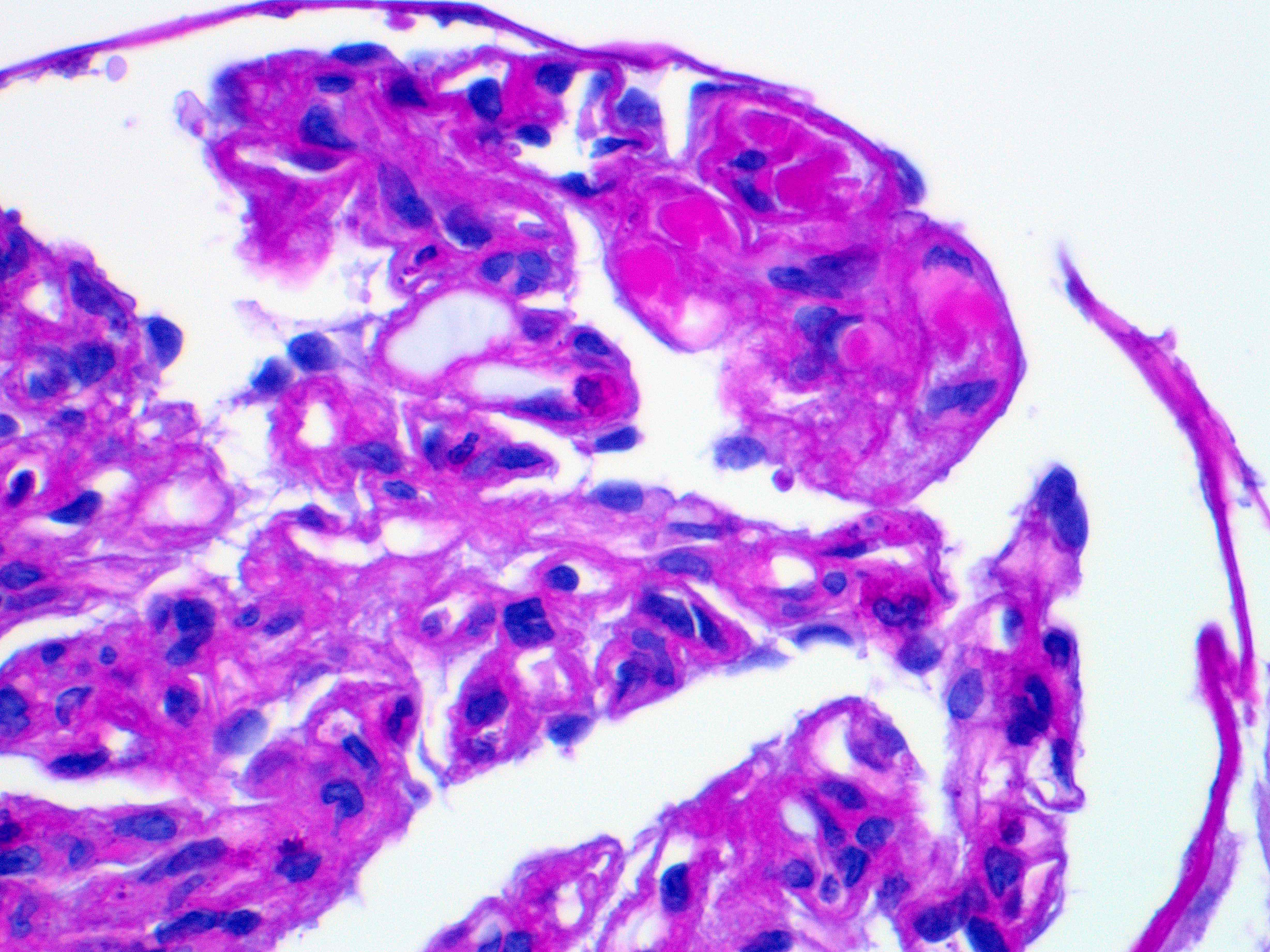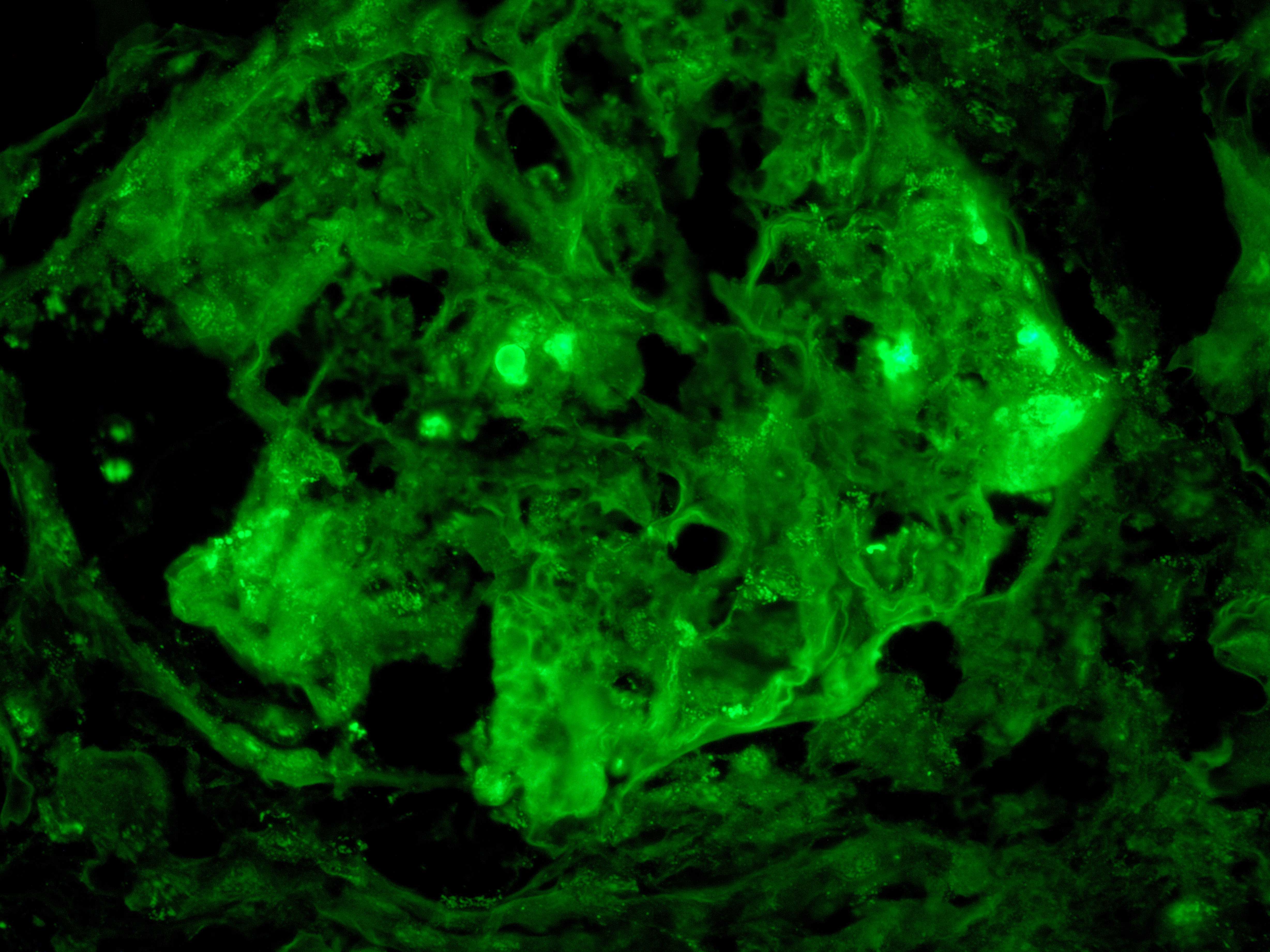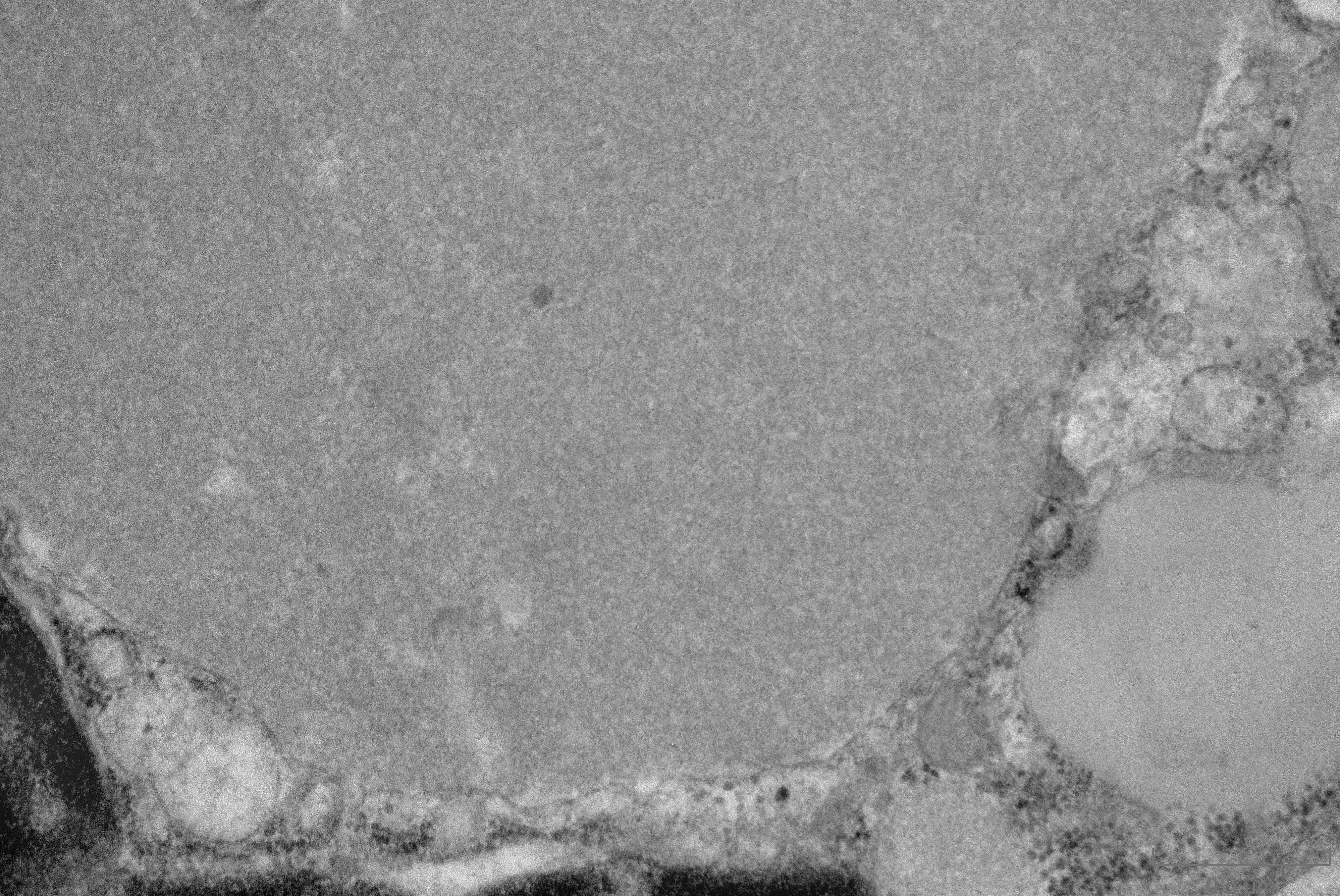Case History
A 63-year-old woman with a history of Sjögren syndrome presented with acute renal failure, proteinuria and hematuria. Renal biopsy performed showed membranoproliferative (MPGN) pattern of glomerular injury (H&E Fig a). Few glomeruli contained strong PASH positive intraluminal deposits (PASH Fig b). Immunofluorescence showed strong intraluminal staining for IgG (Fig c), IgM and light chains. Electron microscopy showed intraluminal deposits with vague short curvilinear substructure (Fig d).
What do intraglomerular deposits represent in this case?
- Fibrin thrombi
- Hyaline
- Cryoglobulin
- Pseudothrombi




Answer: Cryoglobulin
Brief explanation of the answer:
The intraglomerular glassy appearing globular structures in Fig b are cryoglobulins, known as cryo-plugs. Compared to fibrin thrombi, cryo-plugs are strongly positive for PASH by LM and for immunoglobulins by IF. Hyaline and pseudothrombi are also strongly positive for PASH, however, hyaline shows no staining by IF and pseudothrombi are in fact large subendothelial immune complex deposits that protrude into the lumen and on some sections appear as thrombi, hence termed “pseudothrombi”.
Cryoglobulins can be of simple or mixed forms. Cryoglobulinemic vasculitis occurs in association with plasma cell dyscrasia, lymphoproliferative disorder, autoimmune disorders and chronic infection particularly hepatitis C infection. It typically involves skin and glomeruli; lung involvement is rare. Glomerular involvement in patients with Sjögren syndrome is uncommon, but when occurs, it is usually associated with mixed cryoglobulinemia. The pathogenesis is attributed to immune complex deposition formed by cryoprecipitation of monoclonal IgM kappa RF along with polyclonal IgG and IgA in a manner similar to hepatitis C-associated mixed cryoglobulinemia.
Plasmapheresis, high-dose glucocorticoids, and cytotoxic agents are the mainstay of the treatment for severe cases. Renal involvement is associated with poor prognosis.
Case contributed by: Huma Fatima, M.D., Associate Professor, Anatomic Pathology, Chief, Pathology and Laboratory Medicine, Birmingham VAMC